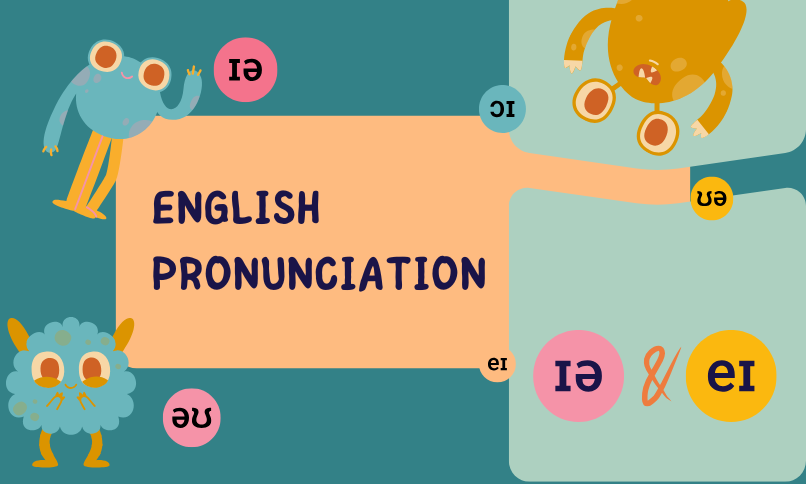Mastering English pronunciation is a vital part of becoming a fluent speaker. Many learners face challenges that can affect their confidence and ability to communicate effectively. In this blog post, we’ll explore common English pronunciation mistakes and provide actionable tips to help you improve your clarity and confidence.
Understanding the Importance of Pronunciation
Before diving into specific mistakes, let’s take a moment to understand why pronunciation matters. Clear pronunciation not only enhances your communication but also ensures that your message is understood. Poor pronunciation can lead to misunderstandings, and in some cases, it may even affect your professional opportunities.
Pronunciation encompasses more than just the sounds of individual letters; it includes intonation, stress, and rhythm. Focusing on these elements will significantly improve your overall speaking skills.
Common Pronunciation Mistakes
1. Vowel Sounds
English has a rich variety of vowel sounds, which can be particularly challenging for non-native speakers. For example, the difference between “ship” and “sheep” can be subtle but significant. Here’s how to tackle vowel pronunciation:
Practice the IPA (International Phonetic Alphabet): Familiarize yourself with the IPA symbols for English vowel sounds. This will help you understand the differences between similar sounds.
Minimal Pair Exercises: Use pairs of words that differ by only one sound, such as “bat” and “bet.” Practice saying them out loud, focusing on the mouth position and sound length.
Record Yourself: Listening to recordings of your own speech can highlight areas where you might be struggling.
2. Consonant Clusters
Many English words feature consonant clusters that can be tricky for learners. For example, “strength” or “twelfth” can be difficult to pronounce. Here are tips for improving cluster pronunciation:
Break It Down: Divide clusters into manageable parts. For example, practice “st” in “stop,” then combine it with the rest of the word.
Use Tongue Twisters: Tongue twisters are a fun way to practice difficult sounds. For instance, try saying, “She sells sea shells by the sea shore” to improve your “s” and “sh” sounds.
3. Silent Letters
English is notorious for its silent letters, which can confuse pronunciation. Words like “knife,” “hour,” and “subtle” can pose challenges. Here’s how to tackle silent letters:
Learn Common Patterns: Familiarize yourself with common silent letters in English. For example, the “k” in “knife” is always silent, while the “b” in “subtle” is often overlooked.
Read Aloud: Reading aloud can help reinforce the correct pronunciation of silent letters. As you encounter these words, pay attention to how they are pronounced in context.
4. Stress and Intonation
English is a stress-timed language, which means that certain syllables are emphasized more than others. Misplaced stress can lead to misunderstandings. Here’s how to master stress and intonation:
Identify Stress Patterns: Learn the rules of word stress in English. For instance, most two-syllable nouns have stress on the first syllable (e.g., “TAble”), while verbs often have stress on the second syllable (e.g., “toDAY”).
Use Music and Poetry: Listen to songs and poems in English. Pay attention to how stress and intonation change the meaning and emotion of the words.
5. Linking Sounds
In natural speech, words are often linked together, which can create challenges for learners. For example, “What are you doing?” often sounds like “Whaddaya doing?” Here’s how to practice linking:
Listen and Imitate: Listen to native speakers in movies, podcasts, or songs. Try to imitate how they link words together.
Practice with Short Sentences: Start with simple sentences and gradually increase complexity. Focus on how words connect in everyday conversation.
Practical Exercises to Improve Pronunciation
1. Shadowing
Shadowing is a technique where you listen to a native speaker and repeat what they say in real-time. This practice helps you improve pronunciation, intonation, and rhythm. Choose short audio clips or videos and try to mirror the speaker’s voice and style.
2. Use Language Learning Apps
Several apps are designed to improve pronunciation. Apps like HelloTalk or Elsa Speak provide immediate feedback on your pronunciation, allowing you to see areas for improvement.
3. Join a Conversation Group
Engaging in conversation with others is one of the best ways to practice pronunciation. Look for local or online English conversation groups where you can practice speaking in a supportive environment.
4. Seek Feedback
Don’t hesitate to ask for feedback from teachers or native speakers. Constructive criticism can help you pinpoint specific areas that need improvement.
Conclusion
Improving your English pronunciation takes time, patience, and consistent practice. By focusing on common mistakes, utilizing effective techniques, and actively engaging in conversation, you can enhance your clarity and confidence as a speaker. Remember, everyone makes mistakes along the way—what matters is your commitment to improving. With dedication, you’ll find that your pronunciation skills will flourish, allowing you to communicate more effectively and confidently in English. Happy practicing!
